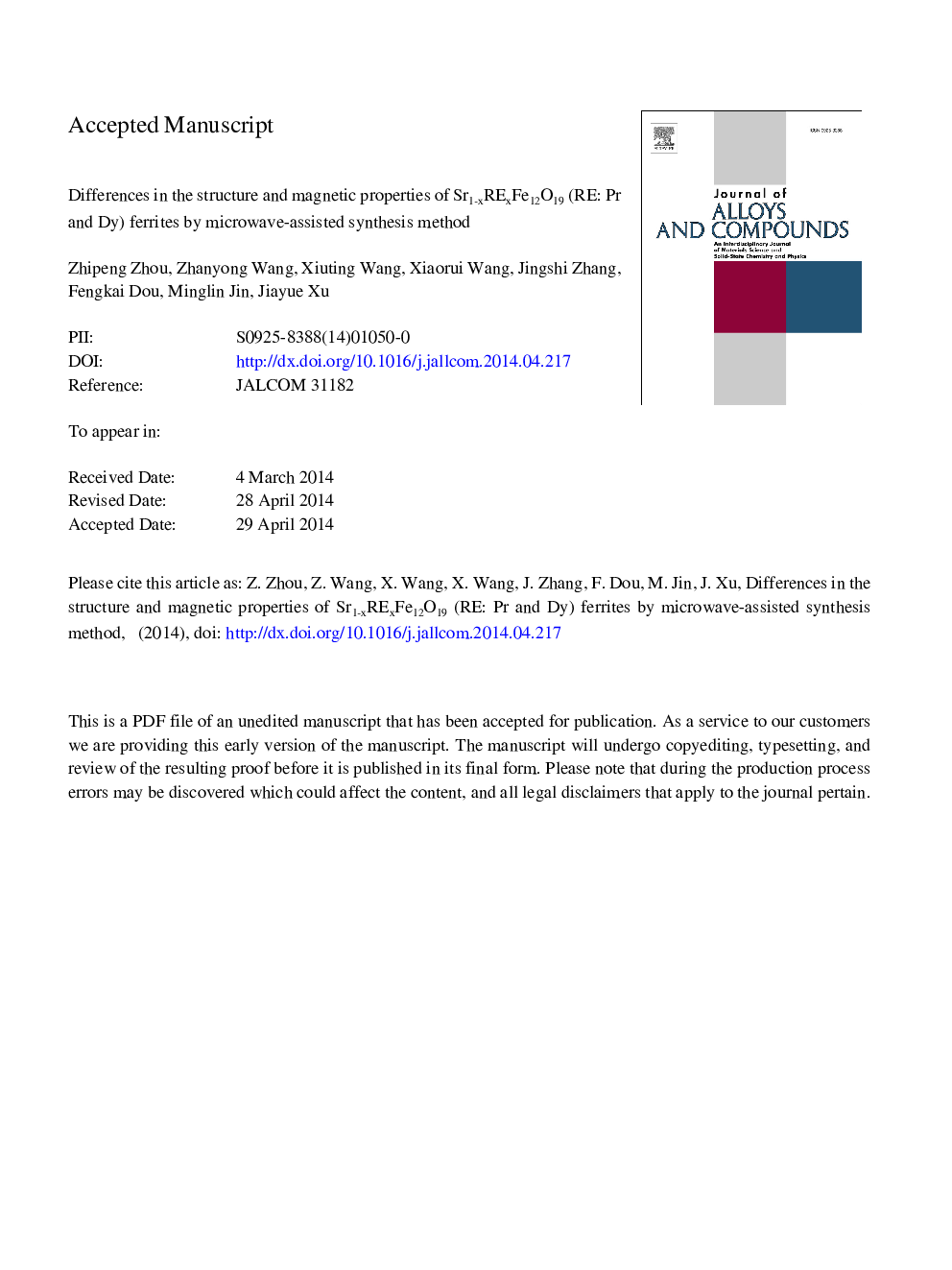| Article ID | Journal | Published Year | Pages | File Type |
|---|---|---|---|---|
| 8001520 | Journal of Alloys and Compounds | 2014 | 32 Pages |
Abstract
Sr1âxRExFe12O19 (RE = Pr, Dy; x = 0, 0.15, 0.25 and 0.5) hexaferrites were synthesized by sol-gel auto-combustion and microwave-assisted calcination route. The thermal decomposition process, structure and magnetic properties of the products were characterized by thermal differential scanning calorimeter (DSC), X-ray diffraction (XRD) and vibrating sample magnetometer (VSM). The coercivity of Pr3+ substituted strontium hexaferrite increases at first and then remarkably decreases to 1985.92 Oe at x = 0.5. The value of saturation magnetization (Ïs) and residual magnetization (Ïr) relates to the content of α-Fe2O3 phase. With the increasing of Pr3+ doping, the coercivity is improved by 24.7% at x = 0.25 without any significant deterioration in Ïs and Ïr. But the substitution of Dy3+ causes a sharply decrease in Ïs and Ïr, and the coercivity decreases from 3282.4 Oe to 1410.8 Oe for x = 0 and x = 0.25, respectively. The maximum coercivity (6717.0 Oe), the minimum Ïs (28.846 emu/g) and Ïr (15.215 emu/g) are received at x = 0.5 for Dy3+ doping, which could be attributed to the highest content of α-Fe2O3 phase and the smaller grain size of SrFe12O19 phase caused by the simultaneous formation of DyFeO3 and hexaferrite phases.
Related Topics
Physical Sciences and Engineering
Materials Science
Metals and Alloys
Authors
Zhipeng Zhou, Zhanyong Wang, Xiuting Wang, Xiaorui Wang, Jingshi Zhang, Fengkai Dou, Minglin Jin, Jiayue Xu,
